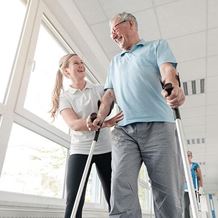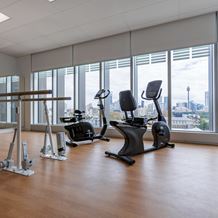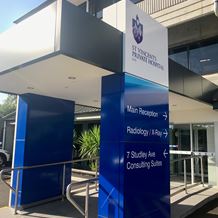How your shoes could be damaging your feet
By Mr Sasha Roshan
- Home
- Patient News
- How your shoes could be damaging your feet
"Those high heels/thongs/flats/wedges will ruin your feet!"
Sound familiar? Yep, we’ve all heard the warnings about ill-fitting shoes and the damage they can cause (often from our own mothers!).
But for many of us, the temptation of fashions’ latest leather and mesh pumps, wedge heel sneakers or satin pointy toe flats (with sequins!) is just too damn irresistible to resist – or worry about ‘potential feet issues’ down the track.
That ‘track’, however, is closer than you might think, as women are more vulnerable to certain foot problems than men – thanks to years spent walking in narrow-fitting shoes that squeeze the toes and from high-heels that cramp the forefoot.

And, foot problems typically worsen with age, with the most common complaint in women being pain in the ball of the foot or their heel.
Now the good news, Cinderella.
If you’re one of the thousands of women in Australia who regularly experience foot pain, you could kick that pain in the arch/ball/heel to the curb.Here, leading orthopaedic surgeon Mr Sasha Roshan explains the most common foot and ankle problems experienced by women and some of the feet fixes available.
The issue: Recurrent ankle sprains & ankle instability
From netball courts to clubs and dancefloors (and bleary eyed walks home!), there’s few of us who’ve escaped an ankle sprain in our time. But, if recurring sprains or symptoms persist well past their curfew, you need to get those fancy feet to a specialist pronto.
The symptoms: “Either one significant ankle sprain injury (inversion injury) or multiple minor sprains can result in tearing or chronic stretching of the ligaments along the outer aspect of the ankle,” explains Mr Roshan. “This can lead to chronic instability or a tendency for the ankle to roll when on uneven surfaces with persistent ankle swelling and pain.”
The fix: Dr Roshan says options vary according to the injury, and could range from physiotherapy to strengthen the muscles and tendons around the ankle, to wearing an ankle brace, or ankle strapping to maintain stability during activity.And, of course lifestyle modifications help too. “If possible, avoid activities which result in ankle instability, such as exercising on uneven surfaces or doing activities which require rapid changes in direction,” adds Mr Roshan.
For persistent symptoms, the latest surgical practices could sort those ankles out quick smart.
“Keyhole and open surgery is combined to address the pain or instability episodes (or both) if they are interfering with your ability to perform usual daily activities, work duties or sports” explains Mr Roshan.
“New methods for ankle reconstruction surgery have many benefits including faster recovery and return to weight bearing, no use of traditional metal implants, no requirement for heavy/bulky boots post operatively, as well as reduced infections and wound complications."
The risk of not treating ankle instability: Chronic pain, inflammation and swelling in the ankle joint.
“Recurrent instability episodes can also cause damage to the joint cartilage with risk of early ankle arthritis,” explains Mr Roshan. “There is also a high risk of further damage to other structures such as tendons if high intensity sport is continued in the setting of ankle instability.
The issue: Bunion deformity (Hallux Valgus)
Not the kind of ‘bump’ anyone wants to be sporting, bunions appear as a prominent (and often painful) bump caused by a deviation of the great toe towards the second toe.
The symptoms: Mr Roshan says bunions can result in pain, difficulty finding comfortable footwear, difficulty performing physical activities or exercise, as well as a host of secondary effects on other areas of the foot including the neighbouring toes.
So how are they caused? “There are many theories about how bunions develop, but the exact cause is often unknown,” says Mr Roshan.
“However, factors likely include:
- Inherited foot type
- Ill fitting shoes
- Foot injuries
- Deformities present at birth (congenital).”
The fix: Like any medical condition, the ‘fix’ is unique to each person, but a simple visit to a specialist can help with diagnosis.
“In some cases treatments might be as simple as modifying footwear (to wide-toe shoes), or wearing a bunion splint or toe spacer to hold the big toe straight,” explains Mr Roshan.
“In cases where bunions are associated with flat feet (loss of the normal arch), application of an arch support insole orthotic can also help to reduce symptoms from the bunion.”
In more pain than that?
“Surgery is recommended when the condition becomes very painful, impacts your ability to perform desired activities, such as sport, and where non-surgical methods have failed,” suggests Mr Roshan. “In suitable patients, bunion correction can often be performed via minimally invasive ‘keyhole surgery’. The benefits of this new surgery mean faster recovery with less time spent waiting for wound healing, reduced pain, reduced joint stiffness and lower wound complications.”
The risk of not treating bunions: Bunions are considered to be progressive, so, if left untreated the deformity will continue to worsen. “This can lead to increasing pain, arthritis, breakdown of the skin overlying the prominent bump and infections. In addition, a progressive bunion may also result in secondary deformity of the small toes,” explains Mr Roshan.
The issue: Hammer Toe/Claw Toe
Yep, we know, it sounds like a Marvel comic book hero, but it might be a stretch to find this condition on any woman’s ‘super power wish list’.
The symptoms: Deformity of the lesser toes (2nd, 3rd, 4th and sometimes the 5th toe) causing the ‘first knuckle of the toe’ to rise up and the tip of the toe to bend or curl downwards towards the floor due to an imbalance in the muscles, tendons and ligaments that usually hold the toe straight. “This can result in pain as well as prominence of the knuckle on top of the toe with rubbing and irritation in shoes,” adds Dr Roshan.
So how is it caused? Not kryptonite! But the causes do range far and wide, from “a traumatic toe injury to arthritis, unusually high foot arches, wearing ill-fitting shoes, tightened ligaments or tendons in the foot and pressure from a neighbouring bunion,” explains Mr Roshan.
The fix: An orthopaedic specialist can help develop a game plan according to your condition. Non-surgical treatment include wearing modified footwear (to wide-toe shoes), insole orthotics or protective toe ‘sleeves’ to reduce toes rubbing on shoes, and strapping the toes to keep them straight.
Mr Roshan says surgery is recommended when the condition becomes painful, impacts sport and other activities or when non-surgical treatments have failed to improve symptoms.
“The latest surgical methods to correct claw or hammertoe deformity involves shortening of the long bone leading to the toe (metatarsal bone) and re-balancing the ligaments/tendons of the toe,” explains Mr Roshan. “Certain parts of this surgery can also be performed via keyhole incisions. The latest techniques also mean that if fusion of one of the joints is necessary, it is now performed using small internal implants, rather than the traditional long pins, which would have to be removed after a few weeks.”
These new surgical methods mean reduced wound complications, faster recovery, reduced pain, no external pins and fewer infections.
The risk of not treating hammertoe/claw toe: Claw and hammertoe deformities are also considered to be progressive. “As the deformity worsens, the knuckle over the top of the toe becomes more prominent,” Mr Roshan explains. “This area can rub on shoes leading to a painful pressure area and eventual breakdown of the skin. With loss of normal alignment at the small/lesser toes the metatarsal bones also become more prominent along the sole of the foot leading to pain in the ball of the foot, a condition known as metatarsalgia.”
Mr Sasha Roshan
Mr Roshan is a Melbourne orthopaedic surgeon who specialises in foot and ankle, hip and knee surgery, using minimally invasive and arthroscopic techniques. He has a particular interest in forefoot reconstruction, foot and ankle deformity correction as well as soft tissue reconstructive procedures for acute and chronic injuries.




